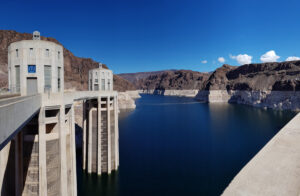Today’s announcement of a 5 percent allocation for Central Valley Project water users south of the Delta is another blow to farmers, rural communities and consumers who buy California farm products.
If last year is any indication a number of specialty crops grown on the San Joaquin Valley’s Westside will once again be on the chopping block. In 2015 Westside acreage planted to tomatoes and garlic fell 9 percent and 17 percent, respectively. The combined spring and fall season lettuce acreage was hit even harder with a 53 percent decrease because of water shortages. This year’s dismal water allocation, despite near normal rain and snowfall, is an indication of how inefficiently the federal fishery agencies are managing segments of California’s water system.
“If federal water allocations continue at these disastrous levels, more of the food that consumers  buy will be grown on foreign soil that does not have the food safety and security requirements of California-grown food,” said Mike Wade, executive director of the California Farm Water Coalition.
buy will be grown on foreign soil that does not have the food safety and security requirements of California-grown food,” said Mike Wade, executive director of the California Farm Water Coalition.
Eastside farmers in the Central Valley Project’s Friant system are receiving just 30 percent of their water this year. A portion of the Friant supply is being used to fulfill other contract obligations that the federal government is unable to meet because of restrictive water management decisions. In the last two years an estimated 25,000 acres of mature citrus trees, or almost 10 percent of the state’s production area, were removed in response to water shortages. California produces 85 percent of the nation’s fresh citrus.
Federal fishery agencies are restricting water deliveries to large swaths of California farmland and urban communities under the guise of protecting threatened and endangered Delta smelt and Chinook salmon. Despite 20 years of the same kind of pumping restrictions, fish populations are continuing to decline and the agencies have been unable to point to any hard science that justifies those decisions.
Above normal winter rains in Northern California have helped fill the state’s largest reservoirs, Lake Shasta and Lake Oroville, to above 85 percent of capacity and over 100 percent of year-to-date average. Urban communities are now making decisions to relax watering restrictions that were put in place during the drought.
In contrast to today’s disappointing federal announcement, California’s State Water project is expected to deliver 45 percent of requested water allocations. The much lower federal allocation flies in the face of the fact that the federal project’s Lake Shasta currently holds 31 percent more water, or a million acre-feet more than the State project’s Lake Oroville.




